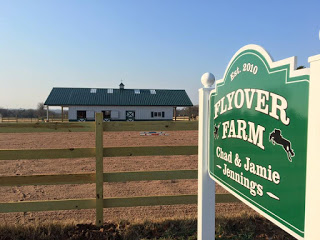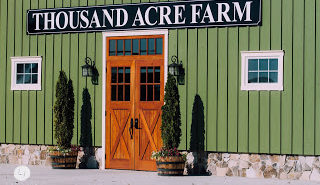Farm Agritourism Preparation Tips
The agricultural industry is changing with the times. In some places, visitors can see their dairy, fruits, vegetables, breads, or baked goods being made and engage in hands-on, immersive activities. Today, this is called agritourism, and its popularity is growing. Activities like pick-your-own fruits and vegetables, hayrides, and corn mazes are all immensely popular. If you’re a farmer and want to expand into agritourism, then it’s important you follow the right steps. Read these farm agritourism preparation tips to boost your visitor numbers and maximize revenue. The nice thing about agritourism is you can keep your farm’s integrity while establishing a rich customer experience.
What is Agritourism?
Agritourism is a form of tourism where visitors take part in farm activities such as animal and crop care, cooking, cleaning, handicrafts, and entertainment. This eco-friendly focus on entertainment and exploration has become mainstream. More people want to engage in rural experiences and outdoor recreational activities. This, in turn, is a great business opportunity for farms and shops. Not only do these places see growing revenue, they are also able to recruit outside help. This provides economic viability for small or rural communities. Even more so, agritourism allows for educational experiences, entertainment, hospitality services, and on-farm direct sales.
Types of Agritourism:
Many different types of agritourism exist. All allow for one-to-one consumer engagement with the agricultural product or service. These types include:
- Pumpkin patch picking
- Corn mazes
- Petting or feeding zoos
- Hayrides
- Horseback riding
- Pick-your-own fruits and vegetables
- Living history farms
- On-farm markets
- Processing demonstrations
- Wildlife photography
- Sleigh rides
- Farm or ranch vacations
- Bed and breakfasts
- Winery or brewery tours and tastings
- Cut-your-own Christmas trees
- Garden tours
- Ice cream or bakery production and tasting
Agritourism Advantages and Disadvantages:
Agritourism provides economic, educational, and social programs to producers and consumers. Farmers get to market their goods via hands-on promotion and contact with families, school trips, and farm-to-table advocates. Still, this comes with its own challenges, like neighborhood impact, traffic control, and noise levels. As agritourism’s popularity grows, farmers must consider all the possible advantages and disadvantages.
Advantages:
As previously mentioned, agritourism contributes to the customers’ wellbeing. Farmers can build their reputation through direct marketing and service to local communities. Rural communities greatly benefit from this through increased job viability and tax revenue. Ultimately, agritourism enhances the economic viability of the farm and provides employment opportunities, additional income, and increased agricultural product awareness.
Agritourism also provides educational opportunities for the local community. Schools, churches, or other community organization can visit farms where they will experience the business from a personal perspective. From there, farmers will give tours teaching about sustainability or local heritage.
Disadvantages:
Additionally, there are some disadvantages and challenges farmers must consider. There are potential noise problems, disruptive traffic, and trespassers that can change the community dynamic. The most worrisome issue is noise level. This can diminish the quality of life for neighboring landowners. Agricultural operations require machinery, trucks, and people. All these can disrupt a community’s local flow. Buffers or noise ordinances will address those issues. It’s important to take note of the increased traffic, too. You should engage with your local government to organize a traffic management plan to identify potential traffic impacts. Make sure you have enough parking. Local, state, and federal ordinances should be properly implemented to ensure no further issues arise.
Preparing Your Farm:
Converting your farm into an agritourism attraction is a must. You must plan for any risks to reap the most reward. It’s essential to design your farm as a welcoming atmosphere. It should be a place people want to spend time at, not just purchase things and leave. The scenery, music, lighting, features, and decorations are all part of a well-designed setup.
Another necessity is to formulate a story. Showcasing your roots shows your business’s history. Especially for small farms, people like a heartwarming backstory. Be sure to talk about your family, crops, livestock, products, equipment, and production practices. The more interactive the experience, the more people will come back.
You should also focus on the long-term or big-picture results. High yields are no longer the main priority of this operation. Establishing strong connections and meeting unique customer needs now take precedence. Even adding customer-centric areas allow for a greater experience. Add rest areas, food and beverage stations, play areas for children, clean restrooms, and areas to shops. Advertise your farm with custom farm signs for a rustic ambiance.
Safety:
Safety is the most important quality for any farm. Lots of people are going to be visiting your farm, so it’s crucial that visitors feel safe. You can ensure this with fire safety equipment, an evacuation plan, and phones with emergency services ready. Make sure staff are CPR-certified and have first-aid on-hand. It’s better to prepare for an emergency rather than wait for one to arise. Be sure to warn guests—especially those with small children—about the risks and dangers of farm operation, such as heavy machinery or large animals. Suggest visitors wear appropriate clothing, such as closed-toed shoes and long pants, to protect against bugs and environmental debris.
Cleanliness and Sanitation:
Agritourist operations are typically seasonal, so it’s important you maintain cleanliness during the off-season as well as the peak season. Put away unused equipment, including any machinery or tools. Lock up any sheds or areas that guests are prohibited from entering. You should also prioritize everyday cleanliness. Make sure wastebaskets and recycling containers are prevalent throughout your farm. Keep animal cages and show areas relatively clean to promote waste management. Every agritourism operator must keep their farm clean to ensure customer satisfaction. Similarly, keep hand-washing stations outside of animal cages and petting areas—as well as outside food and beverage stations—to promote good sanitary practices.
Whichever type of agritourism operation you run, it’s urgent you have a large sign to promote it. At EZSignsOnline, we pride ourselves in our selection of farm and ranch signs. Check out our products and get the best wooden sign for your business!












